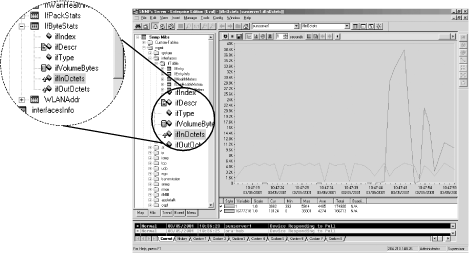Snmpc 7 Serial Number

Snmpc 7 serial numbers, cracks and keygens are presented here. No registration is needed. Just download and enjoy. SNMPc 5.0 Serial Number Keygen for All Versions Find Serial Number notice: SNMPc serial number, SNMPc all version keygen, SNMPc activation key, crack.
I have a few juniper ex4550 combined in a virtual chassis, firmware version 14.1X53-D43.7. With the command 'show chassis hardware' I can see the serial numbers of the SFP modules inserted into it (for example, > show chassis hardware Hardware inventory: Item Version Part number Serial number Description Chassis LX Virtual Chassis Routing Engine 0 REV 21 750-039067 LX EX4550-32F Routing Engine 2 REV 21 750-039067 LX EX4550-32F FPC 0 REV 21 750-039067 LX EX4550-32F CPU BUILTIN BUILTIN FPC CPU PIC 0 BUILTIN BUILTIN 32x 1G/10G SFP/SFP+ Xcvr 0 REV 01 740-021308 MTM0JZL SFP+-10G-SR Xcvr 2 REV 01 740-021308 AQR2H9H SFP+-10G-SR However, I can not find this information via SNMP. Perhaps this function is included in a script similar to how I included the ability to collect information from the ports of the VPC (here is the ). No one has such a script for enable this function?
PRTG Manual: SNMP Traffic Sensor The SNMP Traffic sensor monitors traffic on a device using Simple Network Management Protocol (SNMP). You can create it on a device that provides traffic data, one traffic sensor for each individual port.
It can show the following: • Traffic in • Traffic out • Traffic total You can also add additional channels: • Errors in and out • Discards in and out • Unicast packets in and out • Non unicast packets in and out • Multicast packets in and out • Broadcast packets in and out • Unknown protocols Which channels the sensor actually shows might depend on the monitored device and the sensor setup. Traffic Specific Interface Number You see a list with the names of all items that are available to monitor. Add check marks in front of the respective lines to select the desired items. PRTG creates one sensor for each selection.
You can also use the check box in the table head to select and deselect all items. You can see the connection status of an interface in the respective table column. You can select and deselect interfaces by using the buttons Select all connected interfaces, Select all disconnected interfaces, and Deselect all interfaces. Description 'IN' Channel For the standard channel Traffic In, enter the channel name here.
The sensor shows it in graphs and tables. You can change this description and the description of all other channels in the sensor later. Medal of honor airborne tpb skidrow codex download. Description 'OUT' Channel For the standard channel Traffic Out, enter the channel name here.
The sensor shows it in graphs and tables. You can change this description and the description of all other channels in the sensor later. Description 'TOTAL' Channel For the standard channel Traffic Total, enter the channel name here. The sensor shows it in graphs and tables.
You can change this description and the description of all other channels in the sensor later. Sensor Settings On the details page of a sensor, click the Settings tab to change its settings. Usually, a sensor connects to the IP Address or DNS Name of the parent device where you created this sensor. See the for details. For some sensor types, you can define the monitoring target explicitly in the sensor settings. See below for details on available settings. Basic Sensor Settings Sensor Name Enter a meaningful name to identify the sensor.
By default, PRTG shows this name in the, as well as in,,,,,,. Parent Tags Shows that this sensor from its. This setting is shown for your information only and cannot be changed here.
Tags Enter one or more, separated by spaces or commas. You can use tags to group sensors and use tag–filtered views later on. Tags are not case sensitive. We recommend that you use the default value. You can add additional tags to the sensor if you like. Trainz 2012 rusifikator.
Other tags are automatically from objects further up in the device tree. These are visible above as Parent Tags. It is not possible to enter tags with a leading plus ( +) or minus ( -) sign, nor tags with round parentheses ( ()) or angle brackets ( ). Priority Select a priority for the sensor. This setting determines where the sensor is placed in sensor lists. Top priority is at the top of a list.
Choose from one star (low priority) to five stars (top priority). Traffic Specific Interface Number Shows the number and name of the interface in your physical device that this sensor monitors. This value is shown for reference purposes only. We strongly recommend that you only change it if Paessler support explicitly asks you to do so. Wrong usage can result in incorrect monitoring data! Additional Channels By default, each SNMP Traffic sensor will create the channels Traffic In, Traffic Out, and Traffic Total. Choose additional channels for all selected interfaces.